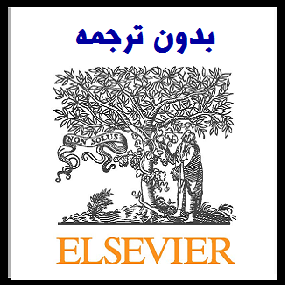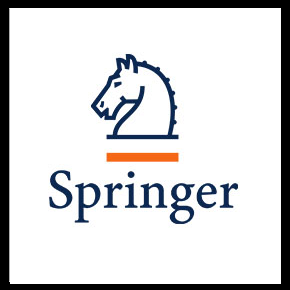مقاله انگلیسی بررسی مقدمات ارزش برند تیم ورزشی (2017 الزویر)


| عنوان فارسی مقاله | بررسی مقدمات ارزش برند تیم ورزشی: دیدگاه دوگانه شناسایی |
| عنوان انگلیسی مقاله | Examining the antecedents of sport team brand equity: A dualidentification perspective |
| نمونه ترجمه کامپیوتری | 1. مقدمه
ورزش – یک نوع مهم از صنعت خدمات hedonic (Hightower، Brady & Baker، (2002)) – در سراسر جهان به طور فزاینده تجاری و سودآور بوده است (Sainam، Balasubramanian & Bayus، 2010). به عنوان مثال، در مثال غرب، تیم های فوتبال جذب بسیاری از طرفداران می شوند که به عنوان فعالیت های اوقات فراغت خود در مسابقات شرکت می کنند (Biscaia et al.، 2016؛ Theodorakis et al.، 2013). با موفقیت شکوفایی مسابقات ورزشی (Sainam و همکاران، 2010)، موفقیت یک تیم ورزشی نه تنها نیاز به حمایت فن، بلکه نام تجاری را به عنوان قهرمان (Stokburger-Sauer & Teichmann، 2014). تا حدودی، توسعه و مدیریت ارزش ویژه برند به ویژه برای تیم های ورزشی حرفه ای بسیار مهم است (Biscaia et al.، 2016). چندین تیم فوتبال حرفه ای اروپایی در مورد این استراتژی خوب کار کرده اند. به عنوان مثال، باشگاه فوتبال انگلیسی منچستر یونایتد اخیرا برند شماره یک ورزشی با ارزش 1.21 میلیارد دلار (Brand Finance، 2015) رتبه بندی کرد. اگر چه تمرین ایجاد ارزش علامت تجاری در زمینه تیم حرفه ای حرفه ای جدید نیست، محققان اولیه در ادبیات بازاریابی ورزشی با توجه به ایجاد ارزش منصفانه برند در ارائه یک درک اولیه از اینکه چگونه یک ارزش منصفانه برند تیم می تواند مفهومی ساخته شده است (گلدن و میلان، 1999؛ گلددن و همکاران، 1998؛ راس، 2006) و یا می تواند اندازه گیری (Bauer، Sauer، Schmitt، 2005؛ Biscaia، Correia، Ross، Rosado، Maroco، 2013؛ Biscaia et al.، 2016؛ راس و همکاران، 2008؛ راس، 2006). بسیاری از محققان به شناسایی هویت اجتماعی بستگی دارند (Boyle & Magnusson، 2007؛ StokburgerSauer & Teichmann، 2014؛ Underwood، Bond & Baer؛ 2001؛ Watkins 2014؛ Wear et al.، 2016) برای بررسی اثرات تک، اهداف مشخص شناسایی مارک های تیم های ورزشی یا ارزش ویژه برند در زمینه های مختلف ورزشی. با این حال، این محققان نه به طور همزمان، بلکه به طور جداگانه در نظر گرفته اند که چگونه اهداف مختلف شناسایی، به الگوی برند ورزشی ورزشی در زمینه ورزشی حرفه ای کمک می کند. با توجه به این که طرفداران ورزش می توانند شناسایی خود را با اهداف چندگانه (Ashforth & Johnson، 2001) توسعه دهند، آنها نه تنها با تیم خود را شناسایی می کنند (مانند Gwinner & Swanson، 2003؛ Katz & Heere، 2016) مارک ها به عنوان اهداف شناسایی بالقوه (Stokburger-Sauer & Teichmann، 2014). بر این اساس، برای مدیران تیم های ورزشی مهم است که این دو هدف از شناسایی طرفداران ورزش منحصر به فرد می تواند همزمان با ایجاد ارزش منصفانه برند تیم ورزشی باشد. توجه؛ (این ترجمه توسط نرم افزار انجام شده و ویرایش نشده است و احتمال وجود اشتباه در آن وجود دارد. در صورت ثبت سفارش، ترجمه توسط مترجمین مجرب انجام خواهد شد. برای مشاهده نمونه ترجمه های تخصصی و اخیر مترجمین جهت اطمینان از کیفیت ترجمه، اینجا کلیک نمایید.) |
| نمونه مقاله انگلیسی |
۱٫ Introduction Sport – an important type of hedonic service industry (Hightower, Brady, & Baker, (2002)) – has become increasingly commercialized and lucrative (Sainam, Balasubramanian & Bayus, 2010) around the world. In the Western context, for instance, football teams attract many fans who attend matches as their major leisure activity (Biscaia et al., 2016; Theodorakis et al., 2013). With the flourishing of sport competitions (Sainam et al., 2010), the success of a sport team not only requires fan support but also branding as champions (Stokburger-Sauer & Teichmann, 2014). To some extent, developing and managing brand equity is especially crucial for professional sport teams (Biscaia et al., 2016). Several European professional football teams have done a good job in regard to this strategy. For example, the English soccer club Manchester United was recently ranked the sport’s number one brand with a value of US$1.21 billion (Brand Finance, 2015). Although the practice of building brand equity in the professional sport team context is not new, initial scholars in the sport marketing literature with regard to the creation of brand equity focus on providing an initial understanding of how a team’s brand equity can be conceptually built (Gladden & Milne, 1999; Gladden et al., 1998; Ross, 2006) or can be measured (Bauer, Sauer, & Schmitt, 2005; Biscaia, Correia, Ross, Rosado, & Maroco, 2013; Biscaia et al., 2016; Ross et al., 2008; Ross, ۲۰۰۶). Many researchers have depended on social identity–based identification (Boyle & Magnusson, 2007; StokburgerSauer & Teichmann, 2014; Underwood, Bond, & Baer, 2001; Watkins, 2014; Wear et al., 2016) to investigate the effects of single, specific targets of identification on sport teams’ brands or brand equity in a variety of sport contexts. However, these researchers have separately, rather than simultaneously, considered how different targets of identification contribute to sport team brand equity in the professional sport context. Given that sport fans can develop their identification with multiple targets (Ashforth & Johnson, 2001), they not only identify with the sport team itself (e.g., Gwinner & Swanson, 2003; Katz & Heere, 2016) but also increasingly tend to perceive team brands as potential identification targets (Stokburger-Sauer & Teichmann, 2014). Accordingly, it is important for sport team managers to know that these two targets of identification from unique sport fans can exist concurrently when creating sport team brand equity. In addition, sport team brand equity researchers have focused on the Western sport market, both in Europe (Bauer et al., 2005; Biscaia et al., 2013; Biscaia et al., 2016; Stokburger-Sauer & Teichmann, 2014) and the United States (Boyle & Magnusson, 2007; Gladden & Milne, 1999; Gladden et al., 1998; Ross et al., 2008; Ross, 2006; Watkins, 2014; Wear et al., 2016). The scant consideration of the Asian professional sport context provides an opportunity for greater understanding of the formation of sport team brand equity beyond the Western sport market. More specifically, unlike the majority of professional sport team brands in the Western market which carry the name of the city where they are located, like Manchester United and the New York Yankees, professional sport team brands in the Asia–Pacific region include the name of the companies that own them (Walsh, Hwang, Lim, & Pedersen, 2015). Examples are the Uni-President 7-Eleven Lions, the Samsung Lions, and the Yomiuri Giants in the Taiwan, Korea, and Japan professional baseball leagues, respectively. While lessons from the fans of successful sport teams indicate they have identified with their favorite team and team brand (Stokburger-Sauer & Teichmann, 2014), it is possible that sport fans in this context are likely to distinguish between identification with the sport team itself (affective perspective) and the sport team’s brand (cognitive perspective; Swanson & Kent, 2015). What has yet to be examined is the role of these two distinguished identifications in exerting independent and equivalent impacts that bridge the relevant antecedents on the formation of sport team brand equity especially in one of the Asia-based professional sport context. |
| سال انتشار | 2017 |
| ناشر | الزویر (ساینس دایرکت) (Elsevier – Science Direct) |
| مجله | مرور مدیریت ورزش – Sport Management Review |
| نوع مقاله | ISI |
| کلمات کلیدی | مدل شناسایی دوگانه، شناسایی با تیم ورزشی، شناسایی با نام تجاری تیم ورزشی، ارزش علامت تجاری برند ورزشی |
| صفحات مقاله انگلیسی | 14 |
| مناسب برای رشته | مدیریت و اقتصاد |
| مناسب برای گرایش | بازاریابی، مدیریت کسب و کار MBA |
| توضحیات | این مقاله انگلیسی جدید بوده و تا کنون ترجمه نشده است. جهت ثبت سفارش ترجمه از لینکهای زیر استفاده نمایید. |
| دانلود مقاله انگلیسی | ○ دانلود رایگان مقاله انگلیسی با فرمت pdf (کلیک کنید) |
| سفارش ترجمه فارسی | ○ سفارش انجام ترجمه و تایپ این مقاله (کلیک کنید) |
| سایر مقالات این رشته | ○ مشاهده سایر مقالات رشته مدیریت (کلیک کنید) |




